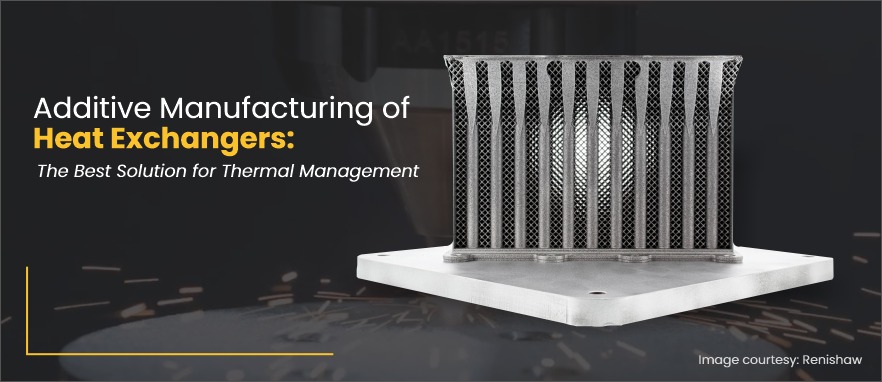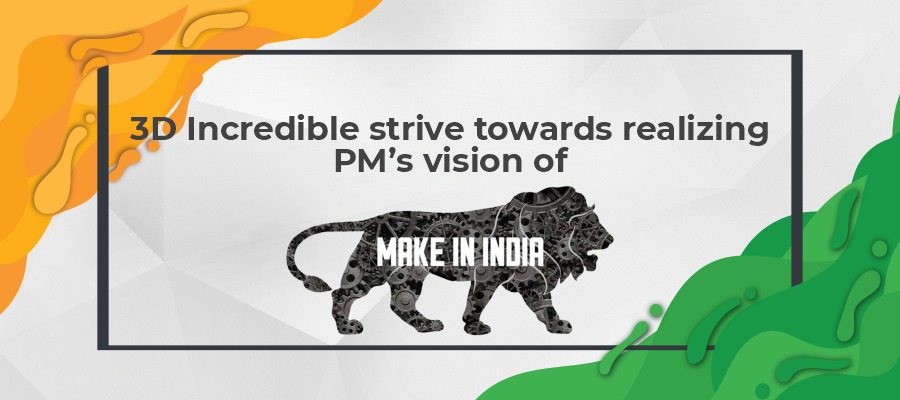Heat exchanger plays a key role in any system where heat transfer is involved. Efficiency of heat exchanger is always a matter of concern for installing it any thermal system. Highly efficient heat exchanger comes with bulky systems and accessories which may face space limitations in applications like aerospace, automotive, nuclear reactors, etc. The superior performance heat exchangers can be fulfilled complex designed surfaces which gives maximum heat transfer area in less space. This complex designed and manufactured systems has greater surface area exposure to hot and cold fluid with minimum space and material consumption.
After doing many qualifying research and successful trials this complex structure heat exchangers have found applications in industries like electronics, aerospace, automotive, power plants, oil and gas, chemical, etc. The manufacturing of such heat exchangers is beyond the scope of conventional manufacturing technologies. In conventional heat exchangers, a lot of restrictions and disadvantages exist, concerning the realizable geometry, the operating temperature, as well as the manufacturing costs. Here comes the role of additive manufacturing which gives the liberty to manufacture parts with any shape which we can imagine!
Additive Manufacturing is the technology developed during last three decades and keeps evolving. Based on computer-aided design (CAD) files in 3D, typically a layer-wise manufacturing process follows, which allows the realization of component designs as well as inner and outer geometries which were previously regarded as not producible. Concerning the manufacturing of heat exchanger, AM technologies open the door to overcome all of the restrictions of conventional. Additive manufacturing enables manufacturing of seamless, leak proof, and efficient heat exchangers regardless of type of heat exchanger. Very complex designs can be realized, and the ratio between the heat exchanging surfaces to the total volume of the heat exchanger can be increased significantly. The increased performance allows the miniaturization of the heat exchanger.
Many heat exchanger companies like HiETA have adopted AM manufactured heat exchanger in their commercial production range. Complex light weight and efficient heat management systems have been their main products. Parts manufactured include recuperators, turbo- machinery and combustion components for micro gas-turbines, phase- change heat exchangers for fuel cells and integrated waste- heat recovery systems, and components for highly-efficient internal combustion engines, including turbo-machinery and sections for handling exhaust gases.
Designs of structures:
Heat exchange capacity of any heat exchanger is governed by temperature difference of fluids, thermal conductivity of material, wall thickness and heat transfer area. As other factors are mostly constraint to change or modify. Usually, the temperature gradient cannot be influenced by outer parameters and is defined by the process in which the heat exchanger is used. Therefore, the quotient of the heat exchanging area and the thickness of the wall are the factors to vary in terms of geometric adaption. The goal for improved structures for a high heat exchange rate should be that they have a high ratio of surface area to thickness. And have a considerable high thermal conductivity. Hence triply periodic minimal surfaces enables the exceptional mixing of fluids without actual mixing gives the tremendous area to transfer heat from hot to cold.
Manufacturing:
After designed systems are validated by CFD simulations, Heat Exchangers can be manufactured by selective laser melting additive manufacturing technology. This technology supports manufacturing components from various heat exchanger suitable materials within fine finish and tolerances. The materials like Inconel 625, Inconel 718, Inconel 939, Alsi10Mg, Copper, etc can be additively manufactured for heat exchangers. The mechanical as well as physical properties of additive manufactured components compete with conventional technologies.
Conclusion:
Additive manufacturing of heat exchangers gives following benefits:
1) Lightweight and Space Efficient
2) Parts without joint
3) Less lead time in reaching the market
4) Excellent thermal management
With above benefits AM of heat exchangers is the good application in electronics, chemical, aerospace, automotive, chemical, power plants, gas turbines, reactors, etc.




